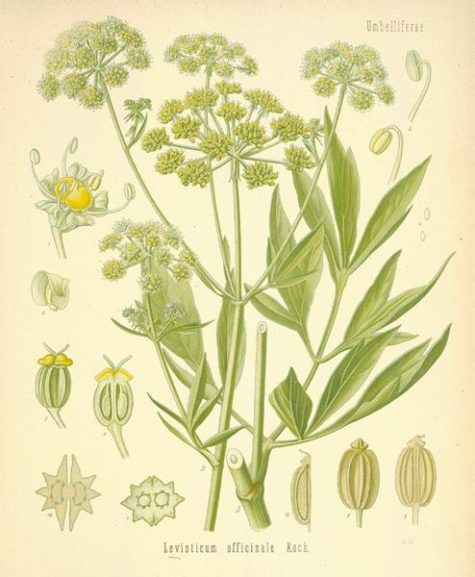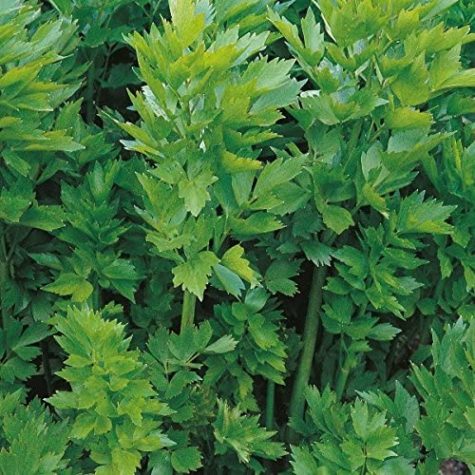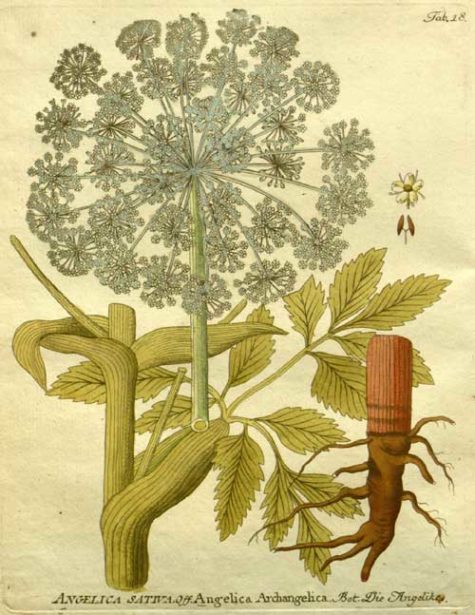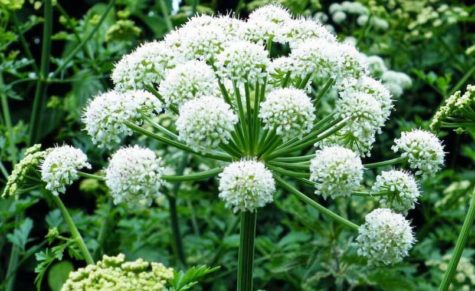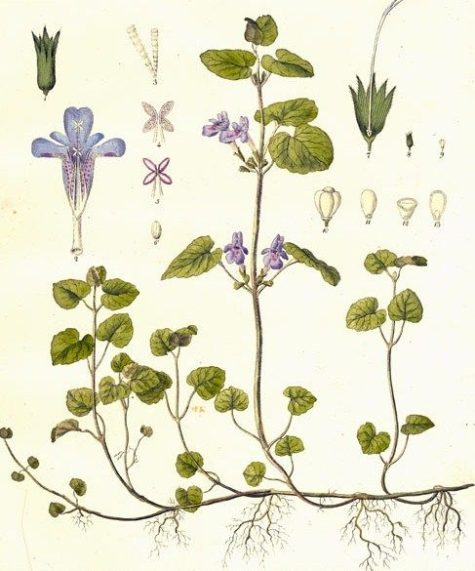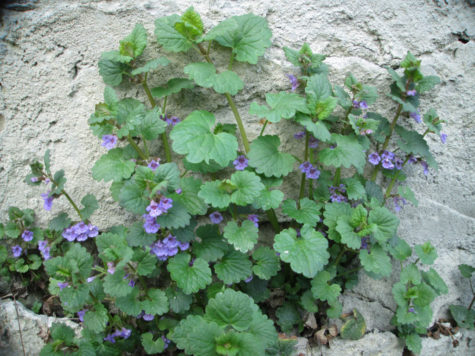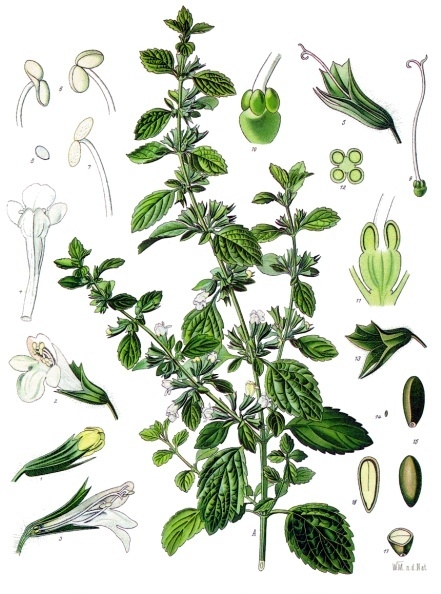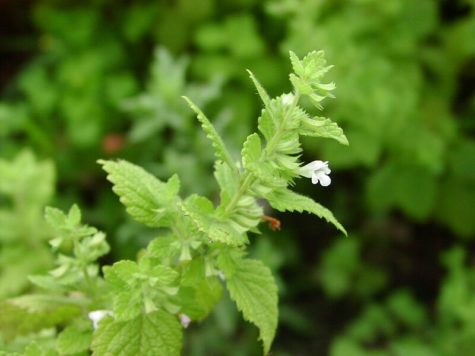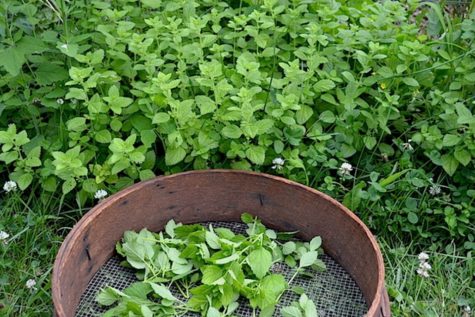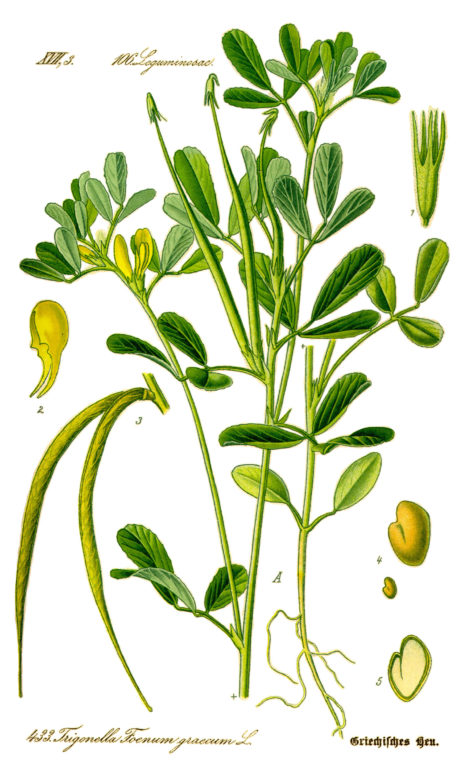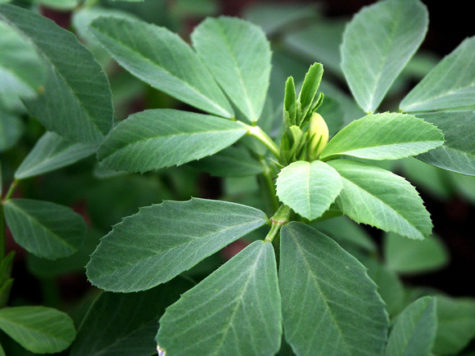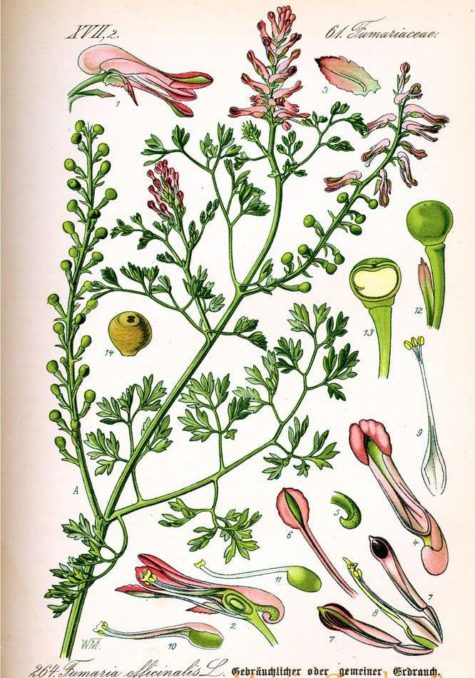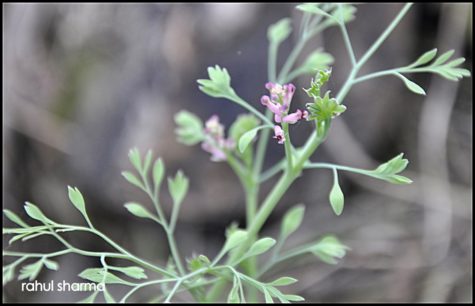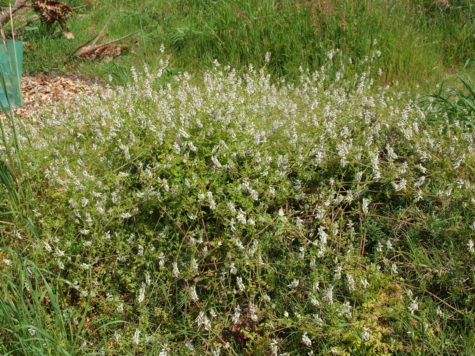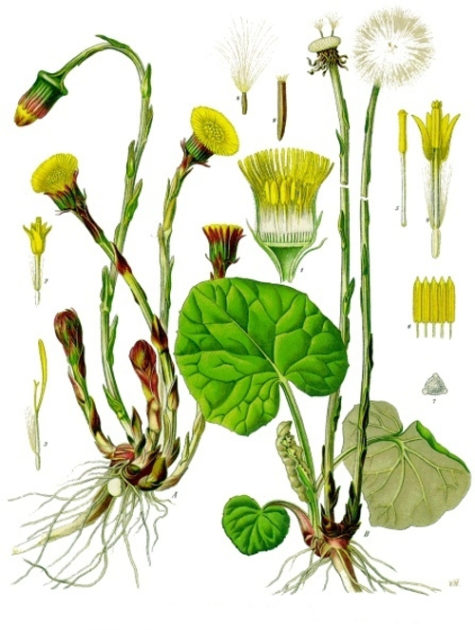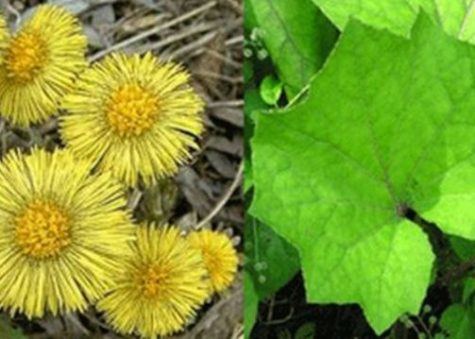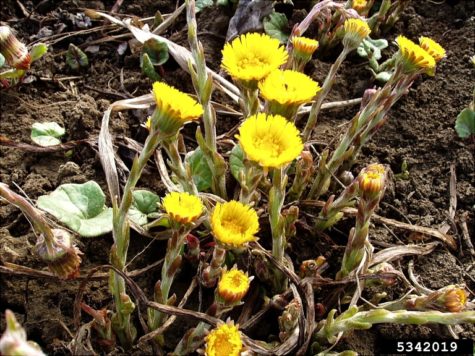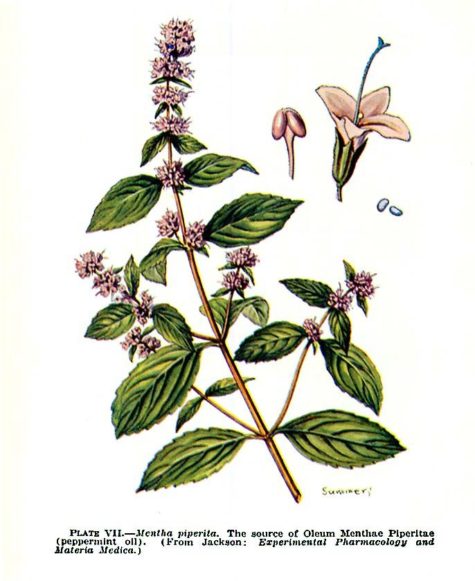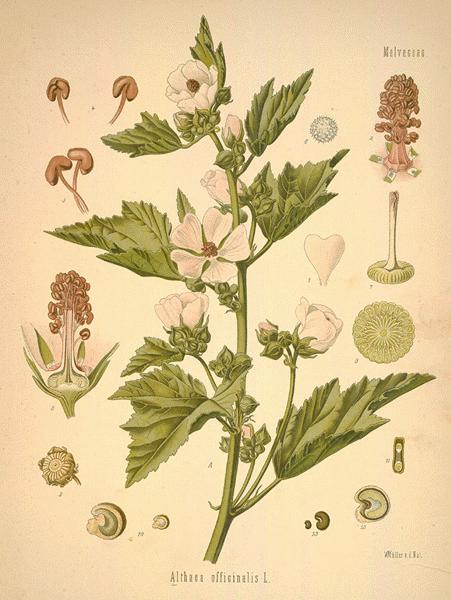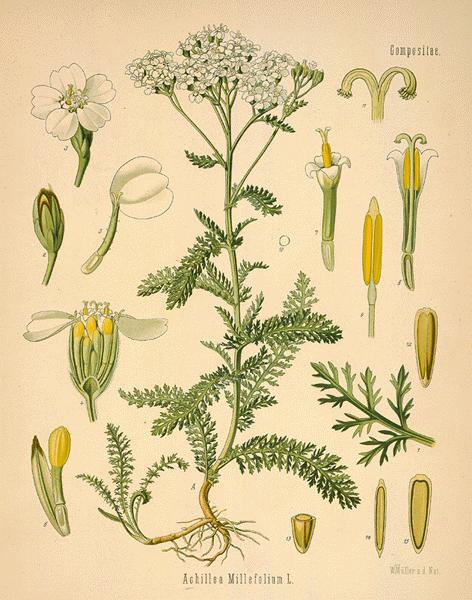Common Herbs
Lovage
- Scientific Name: Levisticum officinale
- Plant Family: Umbelliferae
- Parts Used: Root, Leaves
- Actions: Carminative, Diuretic, Emmenagogue, Expectorant, Stimulant, Stomachic.
Cautions:
In excessive doses it can cause kidney damage; and should not be used by those with kidney problems. Lovage promotes the onset of menstruation and should not be used by pregnant women.
The Basics:
An ancient cure for a variety of diseases, Lovage is enjoying a surge of popularity both in the United States and Europe for salads, soups, pies, candies, and for itself.
Medicinally, Lovage is mostly used for its diuretic properties in cases of water retention and urinary difficulties. Lovage is taken by mouth as “irrigation therapy” for pain and swelling (inflammation) of the lower urinary tract, for preventing of kidney stones, and to increase the flow of urine during urinary tract infections.
Lovage has also been used for disorders of the stomach and feverish attacks in case of colic and for flatulence in children. It was also used for gravel, jaundice, and urinary problems.
The whole plant has a strong, aromatic odor, and for this reason, the herb was also added to baths, probably as a deodorant. Skin problems will sometimes respond to a decoction added to bath water.
Lovage has been used in infusions, tinctures, decoctions, vinegars, elixirs, lozenges, and bath and foot soaks. Continue reading
Angelica
- Scientific Name: Angelica archangelica
- Plant Family: Umbelliferae
- Parts Used: Root, seed, stems
- Actions: Alterative, Antimicrobial, Aromatic, Bitter, Carminative, Circulatory Stimulant, Diaphoretic, Diffusive, Emmenagogue, Expectorant, Grounding, Nervine
Notes: Angelica archangelica is not the same plant as Chinese Angelica (A. sinesis), often referred to as dong quai or dang gui. There are about 30 varieties of Angelica, but Angelica archangelica is the only one officially employed in medicine.
Cautions: Use care when wildcrafting, as it resembles both Queen Anne’s Lace (a benign wild carrot) and Water Hemlock (a poisonous plant).
The Basics:
Angelica is a stunning white flower that looks like a white starburst exploding across the green hillsides. One of Iceland’s most cherished herbs, it is not only beautiful, but also appreciated as a nutritious food, a liqueur and an herbal remedy. The roots and stems can be boiled or pickled and are considered a delicacy in all of Scandinavia. The stems were used to make a musical flute, as well as flavor reindeer milk or be crystallized in sugar for desserts.
Angelica is a veritable giant in the herb world. The towering plant is widely traveled and has a background rich in herbal lore. Use has been made of leaves, stems, roots, and seeds in cooking and in medicine.
Angelica is used for heartburn (dyspepsia), intestinal gas (flatulence), loss of appetite (anorexia), overnight urination (nocturia), arthritis, stroke, dementia, circulation problems, “runny nose” (respiratory catarrh), nervousness and anxiety, fever, plague, and trouble sleeping (insomnia).
According to WebMD, Angelica contains chemicals that might kill cancer cells and fungus, reduce anxiety, and settle the stomach.
Some women use Angelica to start their menstrual periods. Sometimes this is done in hopes of causing an abortion. Angelica is also used to increase urine production, improve sex drive, stimulate the production and secretion of phlegm, and kill germs.
Some people apply Angelica directly to the skin for nerve pain (neuralgia), joint pain (rheumatism), and skin disorders. In combination with other herbs, Angelica is also applied to the skin for treating premature ejaculation.
Angelica is also used as a smell in aromatherapy to reduce symptoms associated with quitting tobacco (nicotine withdrawal).
It should be noted that Angelica has a tendency to increase the sugar in the urine, so those with a tendency to diabetes should avoid it.
A strong volatile oil is present in all parts of the plant, but especially in the root, and Angelica is effective as a general tonic. Eating Angelica stalks is said to relieve flatulence and soothe “a feeble stomach.”
Drinking Angelica tea is said to promote urine and perspiration. It is also reputed to cause a strong dislike for alcohol and is sometimes used as a treatment for alcoholics.
Strain the tea to make a cool bath for tired eyes or a wash to cleanse the skin. The scented leaves are an ingredient in potpourri. Bees and wasps are attracted by the abundant nectar on Angelica flowers.
Continue reading
Ground Ivy
- Scientific Name: Glechoma hederacea
- Plant Family: Lamiaceae
- Parts Used: Leaves, stems, and flowers
- Actions: Expectorant, Astringent, Diuretic, Tonic, a gentle Stimulant, Anti-catarrhal, Vulnerary
General Overview:
Ground Ivy is an aromatic, perennial, evergreen creeper of the mint family. This little plant grows on waste ground and in hedgerows everywhere, the leaves are dark and kidney shaped and the flowers bright dark blue. The Romanies made a tea from Ground Ivy flowers and wood sage as a cure for fevers and colds. The herb is used by herbalists in the treatment of blood and kidney disorders.
The leaves are downy, dark green and kidney-shaped, with glands that contain an aromatic, bitter oil. The tiny deep-throated flowers are purple or blue.
Some people consider Ground Ivy to be an attractive garden plant, and it is grown in pots and occasionally as a groundcover. Easily cultivated, it grows well in shaded places. A variegated variety is commercially available; in many areas this is the dominant form which has escaped cultivation and become established as an aggressive, adventitious groundcover.
Note:
Ground Ivy is sometimes confused with common mallow (Malva neglecta), which also has round, lobed leaves; but mallow leaves are attached to the stem at the back of a rounded leaf, where Ground Ivy has square stems and leaves which are attached in the center of the leaf, more prominent rounded lobes on their edges, attach to the stems in an opposite arrangement, and have a hairy upper surface.
In addition, mallow and other creeping plants sometimes confused with Ground Ivy do not spread from nodes on stems. In addition, Ground Ivy emits a distinctive odor when damaged, being a member of the mint family.
The Basics:
Ground Ivy has been used in the traditional medicine of Europe going back thousands of years: Galen recommends the plant to treat inflammation of the eyes. John Gerard, an English herbalist, recommended it to treat tinnitus, as well as a “diuretic, astringent, tonic and gentle stimulant. Useful in kidney diseases and for indigestion.” It has also been used as a “lung herb.”
Its presence as an invasive weed in North America is the result of the value placed on it by European settlers as a medicinal herb and ale preservative; the species was imported and widely cultivated in herb and kitchen gardens.
Other traditional uses include as an expectorant, astringent, and to treat bronchitis. In the traditional Austrian medicine the herb has been prescribed for internal application as salad or tea for the treatment of a variety of different conditions including disorders associated with the liver and bile, gastrointestinal tract, respiratory tract, kidneys and urinary tract, fever, and flu.
An ancient ale herb, bitter Ground Ivy was used to clear and flavor ale before the introduction of hops.
Continue reading
Lemon Balm
- Scientific Name: Melissa officinalis
- Plant Family: Laviatae
- Parts Used: Leaves – fresh or dried
- Actions: Carminative, Anti-spasmotic, Anti-depressive, Diaphoretic, Hypotensive, Anti-emetic, Hepatic, Nervine, Tonic
- Constituents: Rich in essential oil containing citral, citronellal, geraniol and lindol; bitter principles, flavones, resin.
- How does it work? Lemon balm contains chemicals that seem to have a sedative, calming effect. It might also reduce the growth of some viruses.
General Overview:
A member of the mint family, lemon balm is considered a “calming” herb. It has been used for centuries to help heal wounds, treat venomous insect bites and stings, induce relaxation and a sense of well being, improve appetite and aid digestion. Lemon balm, known and named for its fresh, lemony scent, has long been used as a culinary, cosmetic and medicinal and magical herb.
Note: Lemon Balm, though often called Bee Balm, should not be confused with another plant commonly called Bee Balm (Mondara dydima).
The botanical name, melissa, is Greek for “bee”. Lemon balm has been cultivated in the Mediterranean region for about 2000 years. The Muslim herbalist Avicenna recommended lemon balm “to make the heart merry”. Paracelsus claimed this herb could completely revitalize the body and called it the “elixir of life”, and 14th century French King Charles V drank its tea every day to keep his health.
Lemon balm is used for digestive problems, including upset stomach, bloating, intestinal gas (flatulence), vomiting, and colic; for pain, including menstrual cramps, headache and toothache; and for mental disorders, including hysteria and melancholia.
Lemon balm is excellent for treating anxiety and battling some hard-to-treat viruses. The list of symptoms from anxiety is vast but melissa tackles them all bravely. It is equally fearless when it comes to taking on viruses as daunting as Mono and Herpes. This is an herb every healer wants in the medicine cabinet.
In Ayruvedic medicine, Lemon Balm’s energy is pungent, sour-sweet, cool, and wet. Crushed leaves rubbed on the skin in the garden helps keep away bugs.
Many people believe lemon balm has calming effects so they take it for anxiety, sleep problems, and restlessness. Lemon balm is also used for Alzheimer’s disease, attention deficit-hyperactivity disorder (ADHD), an autoimmune disease involving the thyroid (Graves’ disease), swollen airways, rapid heartbeat due to nervousness, high blood pressure, sores, tumors, and insect bites.
Lemon balm is inhaled as aromatherapy for Alzheimer’s disease. Some people apply lemon balm to their skin to treat cold sores (herpes labialis).
Description:
A familiar garden plant with its fresh, green, nettle shaped leaves and strong bushy growth, lemon balm is native to southern Europe and was probably introduced to the north by the Romans. The creamy flowers are undistinguished and grow in loose clusters from midsummer. The hardy root is perennial.
Lemon balm has the square stems indicative of the mint family with green, oval, finely toothed leaves that grow opposite each other on the stem. The leaves also have fine hairs that capture morning dew and helps keep the plant moist. Flowers are small and yellow to white depending on soil type. It can vary in height between 12 inches to well over 3 feet.
Cultivation:
Easy to grow and tolerant of most soils, it does especially well on a fairly rich, moist ground in a sheltered, sunny position. Sow seeds in the spring or late summer; divide the roots in the fall or early spring; take cuttings in the summer. Keep the plants well weeded.
It prefers moist, not soggy, loamy soil in full sun but will develop more volatile oils when grown in drier, shadier soils. It can tolerate a vast pH range from 5 to 8 in the soil. Lemon balm flowers in the summer and provides an excellent source of nectar for bees and hummingbirds.
Barely cover seed to germinate in 1-2 weeks at room temperature. Set out at 12-15 inches apart in full sun and rich soil. This perennial plant typically gets 12-18 inches tall.
Like any mint, it can be aggressive–it spreads by runners, self-seeds, and can be propagated by cuttings. But it’s a plant, not a monster. I have my lemon balm in partial shade, next to my cabbages and some other aromatic herbs. It has formed some nice thick clumps in two years, but it is not taking over the garden by any means. If you feel concerned, plant it in a pot and sink the pot in the soil.
It is hardy to zone 4: -30°F. It is a good companion plant for members of the brassica family, and deer don’t usually eat it. For drying, harvest leaves just before or after it flowers. Don’t harvest when it’s wet or the leaves will discolor.
Collection
Leaves may be harvested two or three times a year between early summer and early fall. They are gathered by cutting off the young shoots when they are approximately 12 in long. Harvest them for drying as the flowers begin to open. Dry quickly and carefully in the dark, or in the shade, to preserve their color. They should be dried at a temperature not above 95° F.
Unlike other herbs which are at their best when the dew has dried off them in the morning, Lemon Balm should be harvested in mid to late afternoon when the oils are strongest.
Lemon balm can be harvested for fresh use once or twice a week and leaves can be kept in the fridge for a few days, or be frozen. Leaves should be handled delicately as they tend to bruise and turn black.
Hang sprigs to dry in dark cool place. Be sure to keep out of moisture, as leaves are prone to browning and more susceptible to mold. Store dried leaves in air tight container. The leaves lose some of their flavor when dried.
Medicinal Uses
Lemon balm is an excellent carminative herb that relieves spasms in the digestive tract and is used in flatulent dyspepsia. Because of its anti depressive properties, it is primarily indicated where there is dyspepsia associated with anxiety or depression, as the gently sedative oils relieve tension and stress reactions, thus acting to lighten depression.
A little patch of lemon balm in the garden, particularly near the bedroom windows, brings uplifting energy on dark days. We get a lot of cloudy days here in the Pacific Northwest. I’ve found that a bit of lemon balm growing in close proximity to my home brings just enough sunny energy to give my family the lift we need during long spans of dark weather. When the going gets particularly tough, we pick a few sprigs for our drinking water, but most of the time Lemon Balm’s presence is enough. Continue reading
Fenugreek
- Scientific Name: Trigonella foenum-graecum
- Plant Family: Leguminosae
- Parts Used: Seeds
- Medical Actions: Expectorant, Demulcent, Tonic, Galactagogue, Emmenagogue, Emollient, Vulnerary
- Constituents: 30% mucilage, bitter principle, volatile and fixed oil, flavonoids, alkaloids, coumarins, vitamins, and saponins; the most prevalent alkaloid is trigonelline and coumarins include cinnamic acid and scopoletin.
The Basics
Originally from the eastern Mediterranean, cultivated in Europe, Africa and Asia for thousands of years as a fodder plant, a medicine, and a spice, Fenugreek is an herb that has an ancient history. It has great use in local healing and reducing inflammation for conditions such as wounds, boils, sores, fistulas, and tumors.
It can be taken to help bronchitis and gargled to ease sore throats. It’s bitterness explains its role in soothing disturbed digestion.
The seeds are rich in vitamins, nitrates and calcium, have a softening soothing action and are said to encourage lactation. It is a strong stimulator of milk production in nursing mothers, for which it is perfectly safe, and also has a reputation for stimulating development of the breasts.
In traditional medicine, Fenugreek is thought to promote digestion, induce labour, and reduce blood sugar levels in diabetics.
Description
It is an annual and grows about 2 ft high with yellowish peaflowers in midsummer, trifoliate leaves and long narrow pods containing at least 10 square seeds, reaching maturity in a few months in warm climates. It is tender in temperate climates.
It is an annual, erect, robust aromatic herb which grows up to a height of 60 cm. it has compound leaves around 5 cm in length, with long pedicles. The leaflets are obovate, around 2.5 cm long and the margins are slightly toothed. Flowers are seen in pairs or single, axillary and yellow in color. Fruits of the plant are leguminous pods around 5-8 cm long, with a persistent beak, narrow and enclose 10-20 golden yellow seeds which have a typical savory aroma.
Cultivation and Harvesting
Fenugreek is a fairly fragile annual that has a visual similarity to clover. Preferring rich soils and requiring full sun, it grows from one to two feet in height and blooms in smallish white flowers during midsummer.
The primary caution in planting Fenugreek is an awareness of soil temperature. It must have a soil temperature of at least 55°F to germinate, in colder or very damp soils the seeds will rot, and the plant itself will be prone to root rot even when older.
Harvest the seeds when the pods are ripe, but just before they open. Remove the seeds from the pods and dry them naturally in the sun
Medicinal Uses
Fenugreek is a herb which is bitter to taste and increases lactation, soothes tissues which are irritated, stimulates uterus, reduces fever, blood sugar, improves digestion, improves relieving capacity and works as an expectorant, diuretic, laxative, anti-tumour and anti-parasitic effects. Fenugreek relieves diabetes, poor digestion, tuberculosis, gastric inflammation and digestive disorders.
Fenugreek acts as a reliever for many ailments, here is a quick list:
- Cholesterol: It is a proven fact that by consuming Fenugreek cholesterol can be balanced. Around 2 ounces can be taken every day.
- Diabetes: Fenugreek is effective in relieving Type 2 diabetes. Consumption of around 500 mg Fenugreek every day will yield the desired results.
- Skin inflammation: Fenugreek is very effective in relieving burns, boils, abscesses, gout and eczema. Fenugreek powder should be made into a paste with water and a cloth should be soaked into this paste. The soaked cloth can be applied on the affected area of the skin as a poultice.
- Heartburn and Acid Reflux: Seeds of Fenugreek contain mucilage which help is soothing gastrointestinal inflammation. It coats the lining of the intestine and stomach. Hence it works effectively against acid reflux and heartburn. Around 1 teaspoon Fenugreek seeds can be swallowed along with water before meal.
- Fever: This herb is useful for reducing fever. The seeds should be consumed along with honey and lemon.
- Breast enlargement: Fenugreek balances female hormones. It should be consumed up to 3g every day.
- Child Birth problems: Fenugreek stimulates uterine contractions and is helpful in inducing childbirth. But pregnant women should use this remedy only after consulting the doctor.
- Lactation: Fenugreek influences milk production in nursing mothers.
Fumitory
- Scientific name: Fumaria officinalis
- Family: Fumariaceae
- Medical Action: Laxative, alterative, cholagogue, hepatic, diuretic, and aperient, a weak tonic, slightly diaphoretic,
- Constituents: Alkaloids, bitter principle, mucilage, fumaric acid, amino acids, resin. The plant contains isoquinoline alkaloids protopine and allocryptopine.
- Parts Used: Leaves
- Other Fumitories: American Fumitory Fumaria Indica, or Codder Indian
The Basics
Earth smoke, as it is also called, is a wild poppy plant traditionally used as an incense herb with a stimulating effect on liver and gallbladder and as a protection against skin diseases and eczema. The drug fumitory is toxic in high doses.
Fumitory has been known since antiquity and was described in herbals from the Middle Ages. Fumitory is a predominantly Mediterranean genus that once was used medicinally. Traditional preparation involved expressing the juice and evaporating it. It has been used as a laxative and diuretic.
Fumaria species are used in Turkish folk medicine as a blood purifier and an anti-allergic agent.
In traditional medicine, the plant has been used to treat eczema and other dermatologic conditions. It was thought to be good for the eyes, and to remove skin blemishes. In modern times herbalists use it to treat skin diseases, and conjunctivitis; as well as to cleanse the kidneys.
Fumitory has a long history of use in the treatment of skin problems such as eczema and acne. Its action is probably due to a general cleansing mediated via the kidneys and liver. Fumitory may also be used as an eyewash to ease conjunctivitis.
The name is said to be derived either from the fact that its whitish, blue-green colour gives it the appearance of smoke rising from the ground, or, according to Pliny, because the juice of the plant brings on such a flow of tears that the sight becomes dim as with smoke, and hence its reputed use in affections of the eye.
Constituents
The leaves yield by expression a juice which has medicinal properties. An extract, prepared by evaporating the expressed juice, or a decoction of the leaves, throws out upon its surface a copious saline efflorescence. Fumaric acid was early identified as present, and its isomerism with maleic acid was established later.
The alkaloid Fumarine has been believed to be identical with corydaline, but it differs both in formula and in its reaction to sulphuric and nitric acids. It occurs in colourless, tasteless crystals, freely soluble in chloroform, less so in benzine, still less so in alcohol and ether, sparingly soluble in water.
Etymology
The “smoky” or “fumy” origin of its name comes from the translucent color of its flowers, giving them the appearance of smoke or of hanging in smoke, and the slightly gray-blue haze color of its foliage, also resembling smoke coming from the ground, especially after morning dew.
The plant was already called fūmus terrae (smoke of the earth) in the early 13th century, and two thousand years ago, Dioscorides wrote in De Materia Medica and Pliny the Elder in Naturalis Historia that rubbing the eyes with the sap or latex of the plant causes tears, like acrid smoke (fūmus) does to the eyes. Continue reading
Coltsfoot
- Scientific name: Tussilago Farfara
- Family: in the groundsel tribe of the daisy family Asteraceae
- Recommended variety: Tussilago farfara ‘Wien’
- Parts Used: Leaves, flowers, root.
- Medicinal Actions: Demulcent, expectorant, tonic, antitussive, anticatarrhal, diuretic, emollient, pectoral.
- Constituents: All parts of the plant abound in mucilage, and contain inulin, zinc, a little tannin and a trace of a bitter amorphous glucoside. The flowers contain also a phytosterol and a dihydride alcohol, Faradial, and carotene
Cautions:
Coltsfoot root contains tumorigenic pyrrolizidine alkaloids and it suspected that there may be small quantities in the leaves. There are documented cases of coltsfoot tea causing severe liver problems in an infant, and in another case, an infant developed liver disease and died because the mother drank tea containing coltsfoot during her pregnancy. In response the German government banned the sale of coltsfoot. Clonal plants of colstfoot free of pyrrolizidine alkaloids were then developed in Austria and Germany. This has resulted in the development of the registered variety Tussilago farfara ‘Wien’ which has no detectable levels of these alkaloids.
The Basics:
The coltsfoot is another wonderful remedy for coughs and colds, whooping cough and shortness of breath. It has a little yellow flower that smells of honey and blooms in February, long before the leaves which grow to enormous size.
Coltsfoot grows nearly everywhere, on rubble heaps, by the side of newly-made roads, on railway banks and on coal mine tips. In fact there is a very old gypsy saying that wherever coltsfoot grows freely, coal will be found. Once it was so revered in France that coltsfoot flowers were painted as a sign on the doorpost of apothecarie’s shops to let people know that the art of healing was practiced there.
Coltsfoot combines a soothing expectorant effect with an antispasmodic action. There are useful levels of zinc in the leaves. This mineral has been shown to have marked anti-inflammatory effects. Coltsfoot may be used in chronic or acute bronchitis, irritating coughs, whooping coughs and asthma. Its soothing expectorant action gives coltsfoot a role in most respiratory conditions, including the chronic state of emphysema.
The Romanies praise this herb very highly. It also has been a part of Chinese folk medicine for centuries.
A decoction of the leaves of the herb coltsfoot to a pint of boiling water (strain before drinking) is very good for colds, coughs and asthma. If you haven`t time to make a decoction when a cough is bad, use an infusion of coltsfoot and take in teacupful dose. It can be sweetened to taste with honey.
As a mild diuretic it has been used in cystitis.
An infusion or juice from fresh leaves can be used as an antiseptic wash for wounds and skin blemishes. The fresh bruised leaves can be applied to boils, abscesses and suppurating ulcers as a poultice, (enclosed in fine muslin to prevent skin irritation)..
Description
Coltsfoot is a low-growing perennial with fleshy, woolly leaves. A member of the daisy family, coltsfoot produces a single golden-yellow flower head that blooms in spring. As the stem dies, the leaves appear. It has long-stalked, hoof-shaped leaves, about 4 inches across, with angular teeth on the margins. The top of the leaf surface is smooth and almost waxy in appearance, while the underside is covered with white, wool-like hairs. Both surfaces of the leaves are covered, when young, with loose, white, felted woolly hairs, but those on the upper surface fall off as the leaf expands.
The bright yellow flowers appear early in the spring, prior to the emergence of any leaves. In Southern Ontario, coltsfoot flowers in April, often before the last of the snow melts. Flower heads have even been known to push through snow. Some people confuse these flowers with dandelion flowers.
The specific name of the plant is derived from Farfarus, an ancient name of the White Poplar, the leaves of which present some resemblance in form and color to those of this plant. There is a closer resemblance, however, to the leaves of the Butterbur, which must not be collected in error; they may be distinguished by their more rounded outline, larger size and less sinuate margin.
An old name for Coltsfoot was Filius ante patrem (the son before the father), because the star-like, golden flowers appear and wither before the broad, sea-green leaves are produced.
The root is spreading, small and white, and has also been used medicinally. The underground stems preserve their vitality for a long period when buried deeply, so that in places where the plant has not been observed before, it will often spring up in profusion after the ground has been disturbed. In gardens and pastures it is a troublesome weed, very difficult to get rid of.
The plant is so dissimilar in appearance at different periods that both Gerard and Parkinson give two illustrations: one entitled ‘Tussilago florens, Coltsfoot in floure,‘ and the other ‘Tussilago herba sine flore.’
‘Coltsfoot hath many white and long creeping roots, from which rise up naked stalkes about a spanne long, bearing at the top yellow floures; when the stalke and seede is perished there appeare springing out of the earth many broad leaves, green above, and next the ground of a white, hoarie, or grayish colour. Seldom, or never, shall you find leaves and floures at once, but the floures are past before the leaves come out of the ground, as may appear by the first picture, which setteth forth the naked stalkes and floures, and by the second, which porttraiteth the leaves only.’
Pliny and many of the older botanists thought that the Coltsfoot was without leaves, an error that is scarcely excusable, for, notwithstanding the fact that the flowers appear in a general way before the leaves, small leaves often begin to make their appearance before the flowering season is over.
Habitat and Cultivation
Coltsfoot, for all its beauty, tends to like rough places to hang out. Seek it in waste ground, building sites, roadsides, the edge of woods, remembering that it has a preference for heavy clay.
Coltsfoot grows abundantly throughout England, especially along the sides of railway banks and in waste places, on poor stiff soils, growing as well in wet ground as in dry situations. The plant is native to Europe, but also grows widely throughout the United States and Canada.
Coltsfoot is found in open, disturbed areas. It often grows in ditches, along roadsides, on forest edges and on steep slopes prone to landslides. It tolerates wet, poorly drained areas and riverbanks susceptible to spring flooding.
Coltsfoot is collected widely from wild plants in the Balkans, Eastern Europe (Bulgaria, Czechoslovakia, Hungary, Poland, the former Yugoslavia), and Italy.
Collection
After the leaves have died down, the shoot rests and produces in the following February a flowering stem, consisting of a single peduncle with numerous reddish bracts and whitish hairs and a terminal, composite yellow flower, whilst other shoots develop leaves, which appear only much later, after the flower stems in their turn have died down.
These two parts of the plant, both of which are used medicinally, are, therefore, collected separately and usually sold separately.
The flowers should be gathered before they have fully bloomed (end of late winter to mid-spring) and dried carefully in the shade. The leaves are best collected between late spring and early summer. They should be chopped up before they are dried and stored. The fresh leaves can be used until Fall.
Medicinal Uses
Demulcent, expectorant and tonic. One of the most popular of cough remedies. The botanical name, Tussilago, signifies ‘cough dispeller,’ and Coltsfoot has justly been termed ‘nature’s best herb for the lungs and her most eminent thoracic.’
As part of its Latin name Tussilago implies, coltsfoot is reputed as an antitussive. The buds, flowers, and leaves of coltsfoot have been long used in traditional medicine for dry cough and throat irritation. The plant has found particular use in Chinese herbal medicine for the treatment of respiratory diseases, including cough, asthma, and acute and chronic bronchitis. Continue reading
Peppermint
- Scientific Name: Mentha x piperita
- Plant Family: Labiatae
- Parts Used: Aerial parts
- Actions: Anodyne, Antiseptic, Antispasmodic, Carminative, Cholagogue, Diaphoretic, Refrigerant, Stomachic, Tonic. Vasodilator
- Constituents: Up to 2 % volatile oil containing menthol, menthone and jasmone; tannins, bitter principle
Variations:
There are several varieties of Peppermint. The two chief, the so-called ‘Black’ and ‘White’ mints are the ones extensively cultivated. Botanically there is little difference between them, but the stems and leaves of the ‘Black’ mint are tinged purplish-brown, while the stems of the ‘White’ variety are green, and the leaves are more coarsely serrated in the White. The oil furnished by the Black is of inferior quality, but more abundant than that obtained from the White, the yield of oil from which is generally only about four-fifths of that from an equal area of the Black, but it has a more delicate odor and obtains a higher price. The plant is also more delicate, being easily destroyed by frost or drought; it is principally grown for drying in bundles – technically termed ‘bunching,’ and is the kind chiefly dried for herbalists, the Black variety being more generally grown for the oil on account of its greater productivity and hardiness.
The Basics:
White Peppermint is a very important and commonly used remedy, being employed by allopathic doctors as well as herbalists. It is also widely used as a domestic remedy. A tea made from the leaves has traditionally been used in the treatment of fevers, headaches, digestive disorders (especially flatulence) and various minor ailments. An infusion is used in the treatment of irritable bowel syndrome, digestive problems, spastic colon etc. Externally a lotion is applied to the skin to relieve pain and reduce sensitivity.
The essential oil in the leaves is antiseptic and strongly antibacterial, though it is toxic in large doses. When diluted it can be used as an inhalant and chest rub for respiratory infections. The essential oil is used in aromatherapy. Its keyword is “Cooling”.
Peppermint is one of the best carminative agents available. It has a relaxing effect on the visceral muscles, anti-flatulent properties and stimulates bile and digestive juice secretion, and so can relieve intestinal colic, flatulent dyspepsia and other associated conditions.
The volatile oil acts as a mild anesthetic to the stomach wall, which helps to relieve the vomiting of pregnancy and travel sickness. Peppermint plays a role in the treatment of ulcerative colitis and Crohn’s disease. It is most valuable in the treatment of fevers and especially colds and flu.
As an inhalant it can be used as a temporary treatment for nasal catarrh. Where migraine headaches are associated with the digestion, this herb may be used. As a nervine it eases anxiety and tension. In painful periods it relieves the pain and eases tension. Externally it relieves itching and inflammation.
Peppermint oil is useful in combating flatulence and mild indigestion. Many over-the-counter stomach aids contain Peppermint to both enhance the taste as well as the effectiveness of the medicine. However, in a strange bit of irony, Peppermint is something of a trigger food for many suffering from acid reflux and may cause their symptoms to worsen.
How does it work? Peppermint oil seems to reduce spasms in the digestive tract. When applied to the skin, it can cause surface warmth, which relieves pain beneath the skin.
Continue reading
Marsh Mallow
- Scientific Name: Althaea officinalis
- Plant Family: Malvaceae
- Parts Used: The whole plant – Leaves, root, flowers.
- Actions (root): Demulcent, Diuretic, Emollient, Vulnerary
- Actions (leaf): Demulcent, Expectorant, Diuretic, Emollient, Anti-Catarrhal, Pectoral
The Basics:
All mallows, including the garden hollyhock, contain quantities of mucilage and the marsh mallow is an especially soothing, healing herb, useful in treating bronchitis, internal inflammation and irritation, for stimulating the kidneys and as a gentle laxative. Tea made from the leaves makes a soothing eye bath.
The high mucilage content of Marsh Mallow makes it an excellent demulcent (relieves inflammation). The root is used primarily for digestive problems, inflammations of the digestive tract and on the skin. The leaf is used for the lungs and the urinary system. For bronchitis, respiratory catarrh and irritating coughs consider Marsh Mallow leaf. It is very soothing in urethritis and urinary gravel. Externally, the root is indicated in varicose veins and ulcers as well as abscesses and boils.
There are many species of mallow growing around the world, often used as food or medicine and possessing similar properties. The young leaves of all the European mallows can be eaten in salads, the older leaves in soups, the roots boiled or fried and the seeds, known as cheeses, chewed fresh. They are all wholesome and their flavor faint and delicate. Continue reading
Yarrow
- Scientific Name: Achillea millefolium
- Plant Family: Compositae
- Parts Used: The whole plant – stems, leaves, flowers, collected in the wild state, in August, when in flower.
- Actions: Diaphoretic, Hypotensive, Astringent, Diuretic, Antiseptic, Anticatarrhal, Emmenagogue, Hepatic, Stimulant, Tonic, Mild Aromatic
The Basics:
Yarrow is a wound herb, astringent and healing, and rich in vitamins and minerals. Bind bruised fresh leaves to cuts, or make an ointment by pounding the flowers and mixing with coconut oil, or bathe wounds with yarrow tea. The tea is also a good tonic drink, it restores lost appetite and promotes perspiration during colds and fevers. Chew fresh leaves to soothe toothache.
Yarrow also lowers blood pressure due to a dilation of the peripheral vessels. It stimulates the digestion and tones the blood vessels. As a urinary antiseptic it is indicated in infections such as cystitis. It is considered to be a specific in thrombotic conditions associated with high blood pressure.
The flowers are often steamed and inhaled to treat hay fever and asthma and in teas for respiratory problems, as a wash for eczema and other skin conditions; and in chest rubs for cold, flu, and inflamed joints. Continue reading
Rennie Luttrull: queen-annes-lace-seeds
Rosanna: Spignel aka Bald Money
Annamarie Squatrito: Fumitory
EILEEN Klinghagen: Pumpkin
Mahmudul Hasan: Celery
